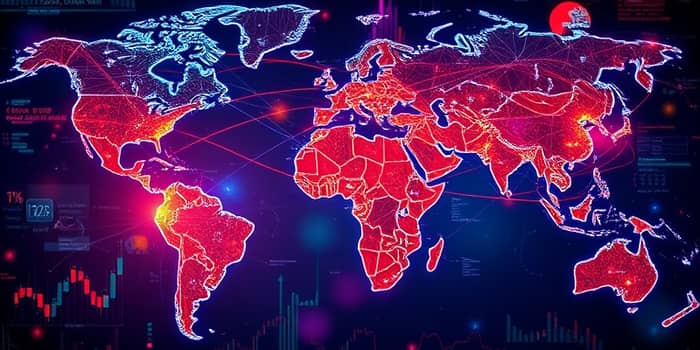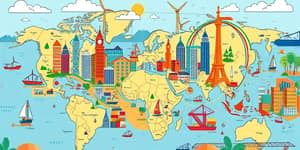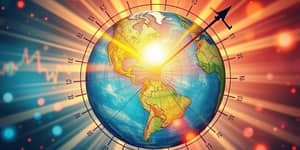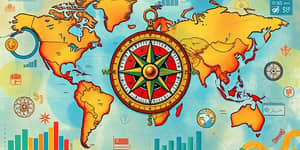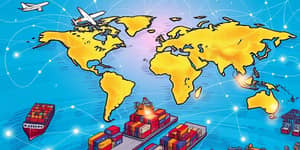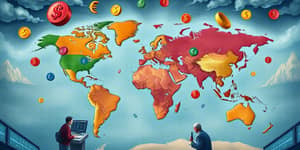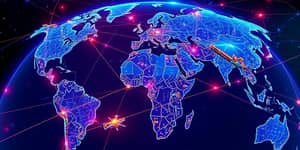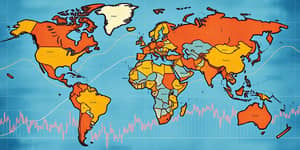In an era defined by rapid change and dynamic linkages, the concept of market interconnectedness has become more than a buzzword. It represents the degree to which national markets are linked across trade, finance, labor, and digital information. From record-breaking cross-border payments to shifting geopolitical alliances, understanding these connections is key to navigating the opportunities and risks of 2025 and beyond.
This article explores the anatomy of global flows, examines the forces driving fragmentation and resilience, and offers practical insights for policymakers, businesses, and individuals aiming to thrive in a world without borders.
The Anatomy of Global Flows
Market interconnectedness encapsulates the movement of goods, capital, ideas, and people across national boundaries. The DHL Global Connectedness Index, which measures these flows relative to domestic activity, reached a record high of about 25% in 2022 and has held steady through early 2025.
These figures challenge the narrative of deglobalization. Instead, they underscore robust and resilient international activity even in the face of political friction and logistical disruptions. Advances in digital technology have further amplified cross-border data transfers, enabling real-time communication, remote work, and e-commerce on a global scale.
Financial and Trade Dynamics
The lifeblood of market interconnectedness lies in financial and trade flows. In 2023, global cross-border bank credit neared $40 trillion, roughly the combined GDP of the U.S., Germany, Japan, and India. International bond issuances by governments and corporations reached $9 trillion in 2024.
These staggering numbers highlight both the scale of interconnected capital and the vulnerabilities it can introduce when shocks occur. Currency markets, too, reflect unparalleled activity—daily trading volumes exceed $6 trillion, underscoring the global cross-border bank credit reached $40 trillion and multi-trillion dollar currency swaps that underpin commerce.
Geopolitical Shifts and Multipolarity
The economic landscape is no longer dominated by a single superpower. A global multipolar system is emerging, with China, India, and other developing economies playing increasingly influential roles.
Western Europe and North America remain significant, but Asia now accounts for a growing share of both global GDP and population growth. Over the next two decades, Asia, Africa, and Latin America will contribute more than 97% of world population growth—less than 3% will occur in Western economies.
These demographic shifts, combined with alternative development models—such as China’s Belt and Road Initiative—challenge the traditional Western-led framework and reshape supply chains, investment decisions, and diplomatic alliances.
Fragmentation, Resilience, and Regionalization
Amid rising geopolitical tensions and pandemic-induced disruptions, companies and governments are re-evaluating hyper-efficient, centralized supply chains. Instead, many are adopting fragmentation and regionalization are intensifying trends that prioritize security, control, and resilience over pure cost savings.
This shift has given rise to multi-node networks where production is spread across several regions. For example, the share of U.S. imports from China fell from 22% in 2017 to 13.4% in 2024, while Vietnam’s share doubled and Mexico became America’s top trading partner.
Within finance, similar regionalization is underway. The renminbi and euro are projected to gain greater prominence as reserve currencies within their respective regions, further embedding localized financial ecosystems.
Navigating Macro Risks and Uncertainties
Despite robust interconnectedness, the global economy faces significant headwinds. The United Nations Conference on Trade and Development forecasts growth at just 2.3% for 2025—below the 2.5% threshold typically associated with recessionary conditions.
Trade policy uncertainty has reached record highs, dampening business confidence. The Shanghai Containerized Freight Index plunged 40% from January to March 2025, erasing post-pandemic gains. Meanwhile, the economic policy uncertainty index surpassed peaks seen during the 2008 financial crisis and the COVID-19 shock, contributing to elevated market volatility known as the “fear index.”
Questions around energy security, climate risk, and debt sustainability in emerging markets only add to the complexity. As financing costs rise globally due to higher bond yields and increased term premiums, both corporates and governments face pressing funding challenges.
The Role of Policy and Economic Statecraft
In this environment, policymakers wield trade, investment, and financial tools as instruments of national strategy—sometimes termed economic statecraft. Tariffs, sanctions, export controls, and foreign investment screening mechanisms are now commonplace methods to pursue security and strategic objectives.
Balancing national interests with the need to preserve open markets is perhaps the greatest policy dilemma of our time. Regions and alliances are forming around shared standards in technology, sustainability, and finance—efforts that can both stabilize flows and introduce new forms of fragmentation.
Looking Ahead: Opportunities and Challenges
As we peer beyond borders, several key themes will shape the future:
- Innovation in digital platforms and financial technologies, driving new forms of cross-border engagement.
- Evolving norms around data governance, privacy, and cybersecurity in international commerce.
- Enhanced regional trade agreements and localized supply chains bolstering resilience.
- Potential for increased inequality without coordinated policy responses on labor, environment, and social welfare.
- Ongoing migration flows influencing labor markets, demographic balances, and social cohesion.
Ultimately, market interconnectedness will continue to oscillate between integration and fragmentation. Stakeholders who understand the interplay of trade, finance, policy, and demographics will be best positioned to harness the benefits while mitigating the risks.
By embracing a nuanced, data-driven perspective, businesses can build supply chains that are both efficient and resilient. Policymakers can craft frameworks that protect national interests without forsaking global prosperity. Individuals, too, can adapt their skillsets and mindsets to thrive in an ever-changing world.
In a landscape where economic policy uncertainty at historic highs and alliances shift constantly, knowledge remains the ultimate currency. Beyond borders, the possibilities are vast for those equipped to navigate complexity, seize opportunities, and build a more interconnected—and resilient—global future.
References
- https://unctad.org/news/trade-tensions-and-rising-uncertainty-drag-global-economy-towards-recession
- https://www.goldmansachs.com/insights/articles/the-financial-times-strategic-interdependence-is-rewiring-the-global-economy
- https://openknowledge.worldbank.org/bitstreams/cf82d3cf-87d8-4799-a6b6-efa8592be377/download

